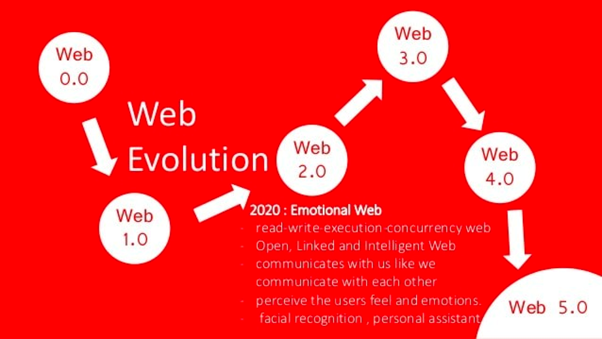In the dynamic realm of the internet, technological advancements have given rise to different phases of the web, each representing a significant leap in functionality and interaction. The transitions from Web 1.0 to Web 2.0 were monumental, and now, the landscape is evolving into Web 3.0, Web 4.0, and the speculative Web 5.0. In this exploration, we will dissect the defining characteristics that distinguish these web iterations and peek into the speculative future of the internet.
Web 3.0: The Semantic Web
Web 3.0, often referred to as the Semantic Web, represents a paradigm shift in how we interact with and consume information online. This phase is marked by the implementation of advanced technologies that enhance data understanding, creating a more intelligent and personalized user experience.
Semantic Understanding:
At the core of Web 3.0 lies the concept of semantic understanding. Unlike its predecessors, Web 3.0 aims to imbue machines with the ability to comprehend data contextually. This allows for a more nuanced understanding of user queries, leading to more accurate and relevant search results.
Personalization:
Web 3.0 introduces a new level of personalization. Algorithms analyze user behavior and preferences, tailoring content and recommendations to individual tastes. This not only enhances user satisfaction but also streamlines the consumption of digital content.
Interconnected Data:
The Semantic Web promotes the seamless linking of data across various platforms. This interconnectedness enables a more cohesive digital experience, with information flowing effortlessly between applications and services.
Web 4.0: The Intelligent Web
Building upon the foundations of Web 3.0, Web 4.0 takes the integration of technology to new heights, incorporating artificial intelligence (AI) and other advanced systems. The Intelligent Web strives to create a digital environment that learns, adapts, and anticipates user needs.
Advanced AI Integration:
Web 4.0 is characterized by a higher degree of AI integration. Machine learning algorithms become more sophisticated, learning from user interactions to provide a more personalized and intuitive experience. This includes features such as predictive analytics and context-aware systems.
Enhanced User Experience:
The primary goal of the Intelligent Web is to enhance the overall user experience. Through AI, systems can predict user behavior, offering tailored suggestions, content, and services. This anticipatory nature makes the digital experience smoother and more user-friendly.
IoT Integration:
The Internet of Things (IoT) plays a pivotal role in Web 4.0. Smart devices and sensors are interconnected, creating an ecosystem where data is shared seamlessly. This integration enhances efficiency and connectivity, creating a more intelligent and responsive digital environment.
Web 5.0: The Speculative Frontier
While not universally recognized as a formal phase, Web 5.0 is a speculative concept that envisions the internet as an emotionally intelligent space. This phase explores the integration of technology and emotions, paving the way for a more empathetic and human-centric digital experience.
Emotionally Aware Systems:
The core idea behind Web 5.0 is the development of emotionally aware systems. In this speculative phase, technology not only understands the context of data but also recognizes and responds to human emotions. This could lead to more empathetic AI interactions and a deeply personalized digital experience.
Human-Machine Collaboration:
Web 5.0 suggests a higher level of collaboration between humans and machines. Technology seamlessly integrates into daily life, understanding and responding to human needs and emotions. This collaborative approach blurs the lines between the digital and physical worlds.
AR and VR Integration:
Augmented Reality (AR) and Virtual Reality (VR) are expected to play a more significant role in Web 5.0, creating immersive digital experiences. These technologies could further bridge the gap between the real and virtual worlds, offering new dimensions to digital interactions.
Conclusion: Navigating the Digital Horizon
In conclusion, the evolution of the web from 3.0 to 4.0 and the speculative notions of 5.0 demonstrate the continuous progression towards a more intelligent, interconnected, and emotionally responsive digital space. While Web 3.0 focuses on semantic understanding and personalization, Web 4.0 introduces advanced AI and IoT integration. The speculative Web 5.0 envisions a future where technology is not just intelligent but emotionally aware, forging deeper connections between humans and the digital realm. As we navigate this digital horizon, the internet transforms into a dynamic and adaptive space, shaping the way we interact, connect, and experience the vast landscape of the online world.






